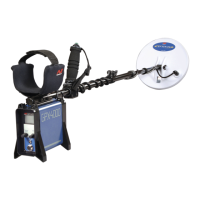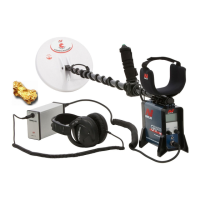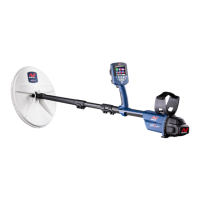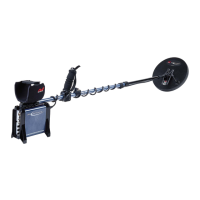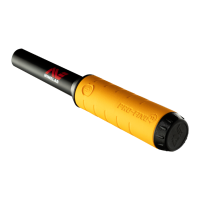38
GPX 5000 Range
GPX 4800 Range
Tracking, Fixed
Tracking, Fixed
Ground Balance
Compensating for ground mineralisation.
Most ground contains not only sand but also many different
chemicals, minerals and salts. These extra materials are
referred to as ground mineralisation. If not compensated for,
this ground mineralisation may produce erratic sounds known
as ‘ground noise’. This ground noise can make it more difficult
for you to hear target signals; particularly soft target signals
from small/deep targets.
The Ground Balance (GB) function in your GPX Series detector
tests for ground mineralisation and compensates for it; thus
reducing ground noise. This ensures signals from targets, such
as gold nuggets, are not confused with ground noise. The
GPX 5000 and GPX 4800 can be operated in Tracking or Fixed
Ground Balance.
Tracking
Tracking instructs the detector to cancel the effects of
ground mineralisation, and will automatically monitor the
mineralisation level and adjust the Ground Balance setting
when ground conditions change during detecting.
Tracking is preferred in heavily mineralised ground, especially
where the mineralisation is variable, or when you want to
cover a large area quickly and efficiently.
Tip: Use the simple GB tests
for Tracking (p. 41) and
Fixed (p. 43) to regularly
check that your detector is
compensating for
ground noise.

